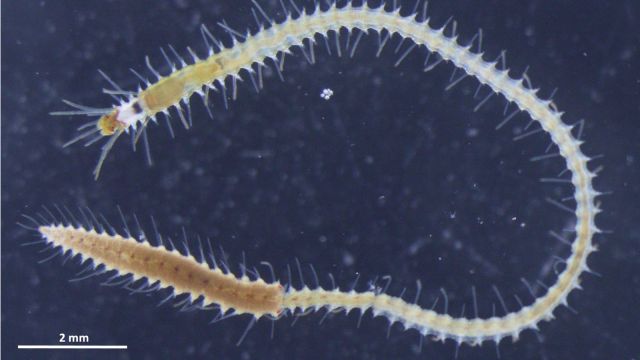This sea worm’s ‘butt’ swims away to reproduce. Now, researchers know why
The mystery of how some sea worms' rear ends swim away independently to mate has perplexed scientists for decades. Now, we might have an answer.
 A mature Megasyllis nipponica with a developing female stolon. (University of Tokyo)
A mature Megasyllis nipponica with a developing female stolon. (University of Tokyo) Truth can be stranger than fiction, especially when it comes to the animal kingdom. Some annelid worms or segmented worms reproduce with a process called stolonisation, where the posterior part of their body with reproductive parts detach from the original body. That detached part is called the stolon, and it swims around by itself and spawns when it meets the opposite sex.
For it to be able to swim by itself, it needs to develop its own eyes, antennae and swimming bristles while still attached to the original body. But that has been perplexing scientists for quite a while—how does the “stolon head” from in the middle of the original body?
To study that, researchers investigated the developmental gene expression patterns of sexually maturing worms. Typically, “head formation genes” are not expressed as much in the middle of the body. But when the worms’ reproductive parts develop, those genes are highly expressed in the middle of the rear end of the original body.
“Hox genes” determine the body segmentation along the worms’ bodies. The researchers initially thought that these genes would be expressed differently along the “anterior-posterior” axis.”
“Interestingly, the expressions of Hox genes that determine body-part identity were constant during the process,” said Miura, co-author of a paper published in the journal Scientific Reports, in a press statement. As a result, the stolons don’t have a differentiated digestive tract and have repeated uniform body segments (except for the head and tail). “This indicates that only the head part is induced at the posterior body part to control spawning behavior for reproduction.”







